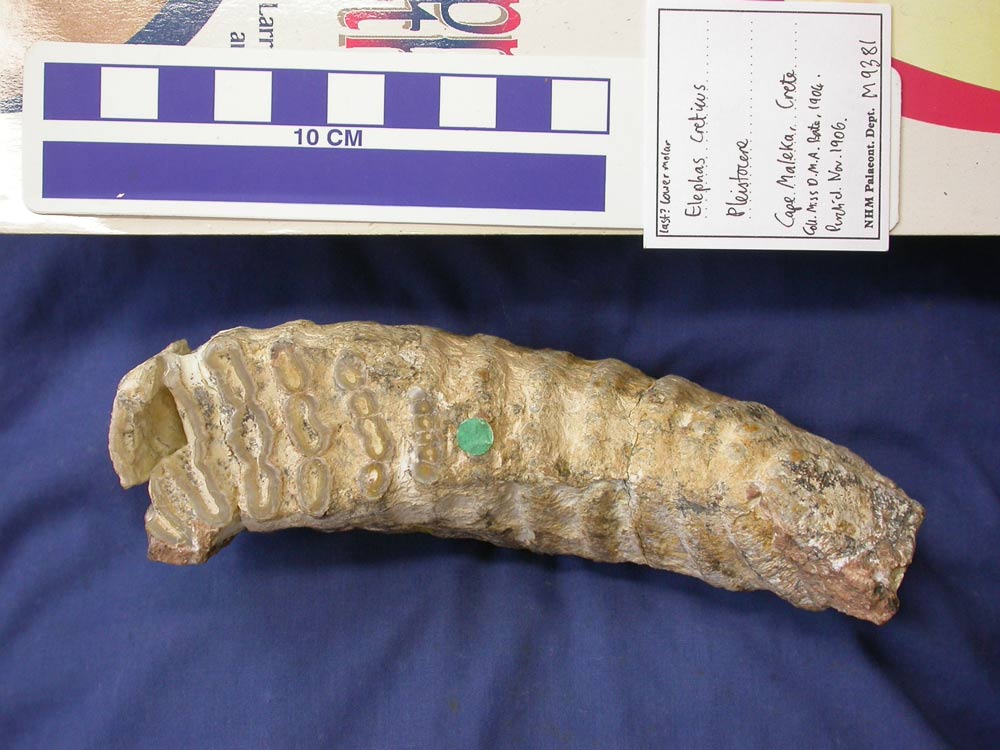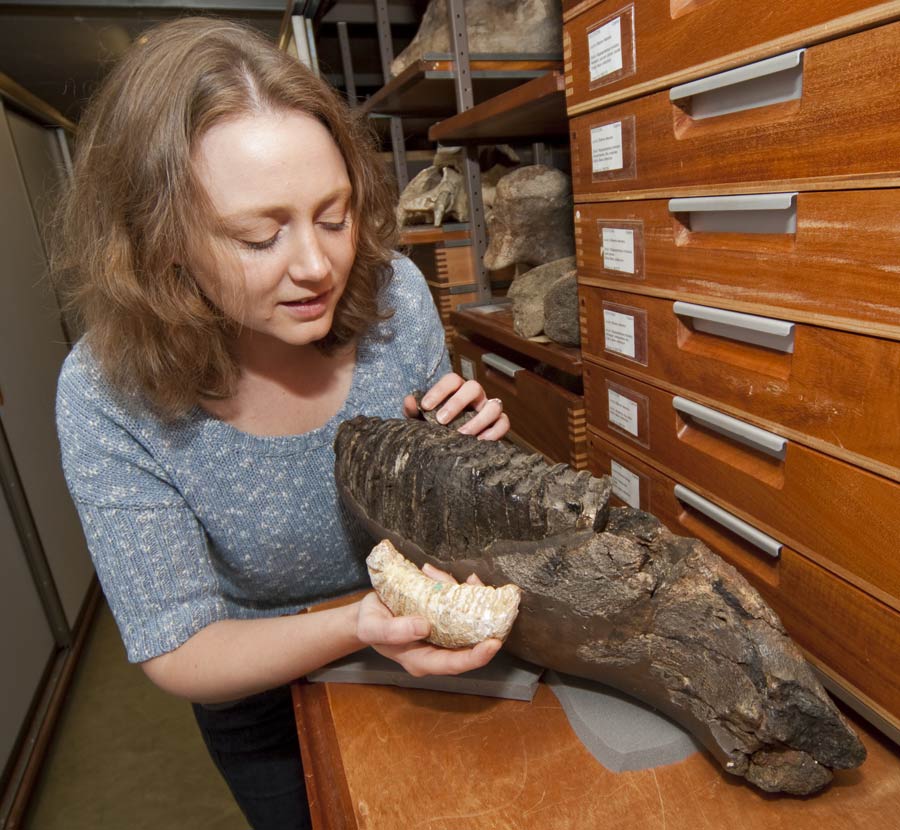Dwarf Gallery: Fossils of a Little Mammoth
Mythical Island

Researchers have analyzed fossils discovered on the Greek island of Crete more than a century ago, finding they belong to what is now considered the world's smallest dwarf mammoth. Called Mammuthus creticus, the best would have stood at just 3 feet 8 inches (1.13 meters) high at the shoulders and weighed only approximately 680 pounds (310 kilograms), or about the size of a modern baby African or Asian elephant.
Mammoth Molar

Scientists had long argued whether remains discovered in Crete belonged to a curvy-tusked mammoth or straight-tusked elephant. Now, teeth (lower third molar, shown here) discovered in the same area suggest the remains indeed came from a mammoth, now considered the world's smallest.
Big Mouth

Victoria Herridge, a vertebrate paleontologist at the Natural History Museum in London, with teeth from the ancient dwarf mammoth.
Fossil Teeth

Fossilized teeth (shown here in the sediment) suggest the dwarf mammoth browsed on shrubs as opposed to grass like woolly mammoths.
Woolly Mammoths

These dwarf mammoths were not woolly mammoths. Rather, the researchers suspect the beasts were more adapted to warmer environments, appearing more like modern African or Asian elephants, with a sparse covering of hair. They would've sported curvy tusks, though, as all mammoths do.
Like a Baby Elephant

The newly identified dwarf mammoth would have been about the size of a baby wild African elephant, the researchers say.
Get the world’s most fascinating discoveries delivered straight to your inbox.
 Live Science Plus
Live Science Plus






